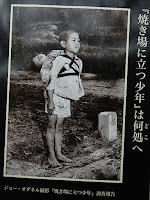December 28, 2019
X'mas season event in busy southwestern Japan city focuses on eco-friendliness
Brilliant illumination displays have come to stay as an important part of Christmas and other open-air winter events across Japan.
The Fukuoka Christmas Market is one of these events, but it has been designed not just to entertain visitors amid cold weather but also to give them an opportunity to think about the importance of eco-friendliness.
 The event was held simultaneously at four different locations in Fukuoka, one of the busiest cities in southwestern Japan, until December 25.
The event was held simultaneously at four different locations in Fukuoka, one of the busiest cities in southwestern Japan, until December 25. The biggest site of them was set up at the square in front of the north entrance to JR (Japan Railways) Hakata Station.
The biggest site of them was set up at the square in front of the north entrance to JR (Japan Railways) Hakata Station.The European-taste Christmas Market at the Hakata Place Light Town, the seventh of its kind, attracted hundreds of people every night.
 A panel placed at a corner at the site carried an organizers' message calling for cooperating in reducing food loss and garbage while enjoying the happy event.
A panel placed at a corner at the site carried an organizers' message calling for cooperating in reducing food loss and garbage while enjoying the happy event. As part of efforts to raise awareness about eco-friendliness, organizers recommended visitors to use mug cups, rather than conventional disposable plastic and paper cups, at shops which serve hot wine and hot whisky.
As part of efforts to raise awareness about eco-friendliness, organizers recommended visitors to use mug cups, rather than conventional disposable plastic and paper cups, at shops which serve hot wine and hot whisky. The original, colorful mugs have been made with different designs every year since the first Christmas Market there in 2013.
The original, colorful mugs have been made with different designs every year since the first Christmas Market there in 2013.In an additional effort to reduce the use of plastic products, wood-made knives and forks and a ceramic plate were used at a shop serving sausages.
As the number of supporting local businesses has continued to grow, this year's Christmas Market at the station square brought together about 30 shops providing foods and drinks and carrying accessories and Christmas goods.
 "Some shops change sometimes and open on certain days, so you can enjoy many times," a staffer said.
"Some shops change sometimes and open on certain days, so you can enjoy many times," a staffer said.The station square spreads on an area of about 200 square meters, including a rent site of 62 square meters.
The square is located at so convenient a place that draws not just interested people but also commuters or passers-by for attractive events.
 As the night falls, seats in front of the stage and the light tower were occupied by spectators one by one.
As the night falls, seats in front of the stage and the light tower were occupied by spectators one by one.At a different place at the square was a crowd of people, including families and kids, looking up at their own beaming faces displayed on a huge screen on the wall of the station building.
 The use of less power-hungry LEDs is seen to spread further in Japan and this is expected to reduce the cost of night illuminations.
The use of less power-hungry LEDs is seen to spread further in Japan and this is expected to reduce the cost of night illuminations.Many Japanese people, families and couples alike, are expected to be drawn more to heart-warming light displays in the holiday season ahead.










































